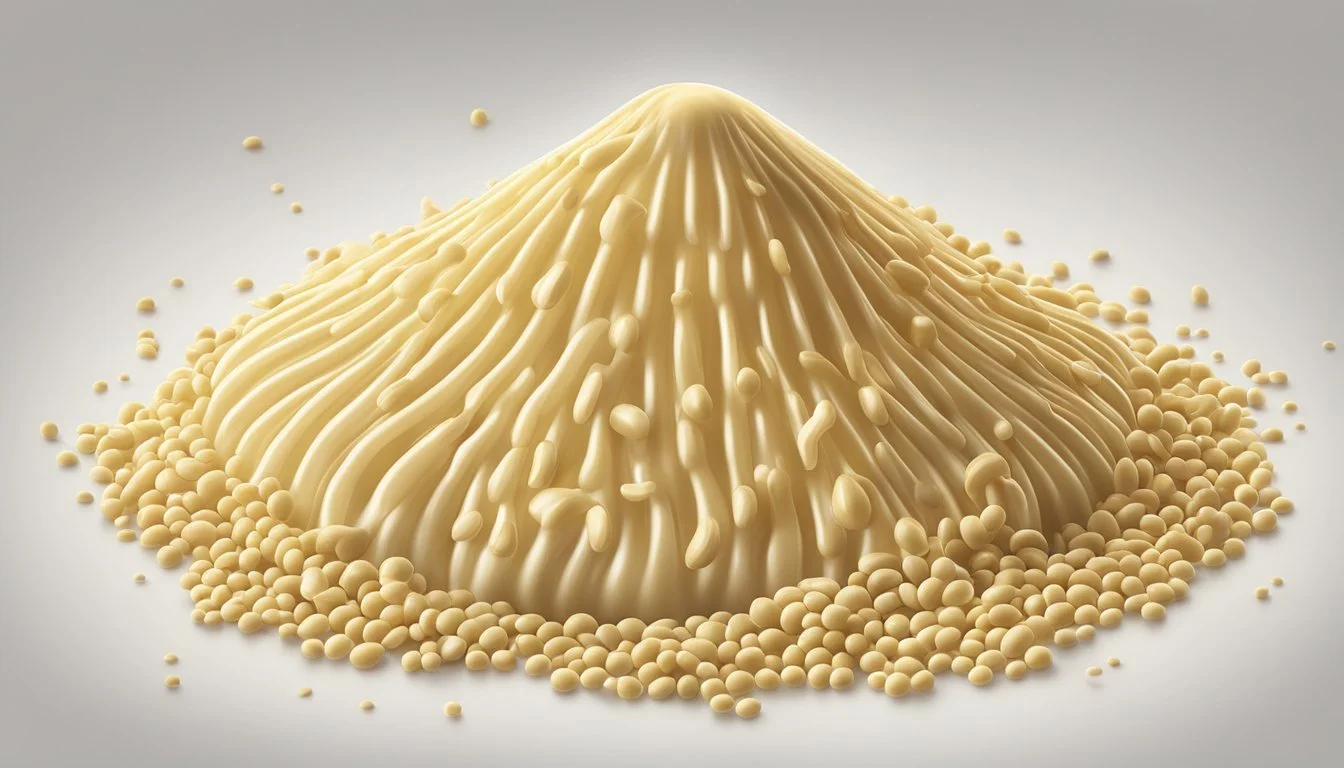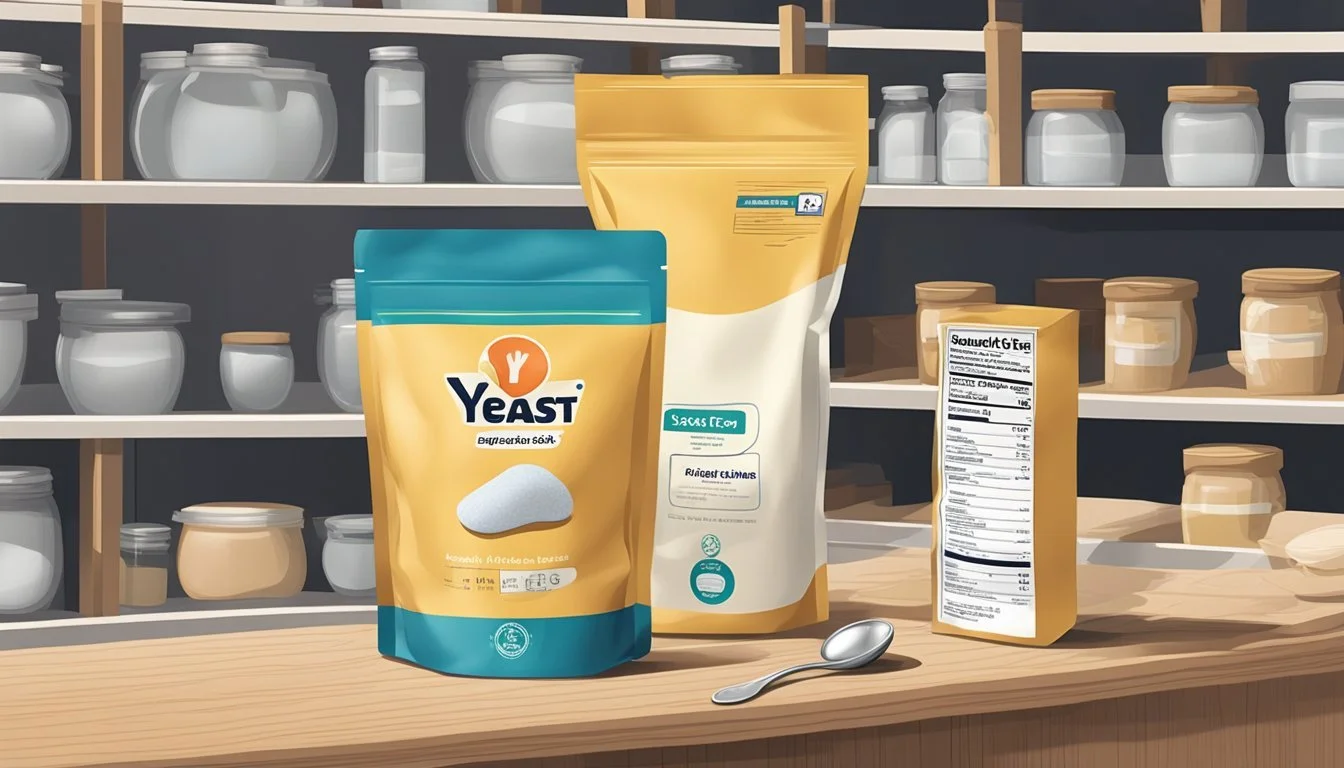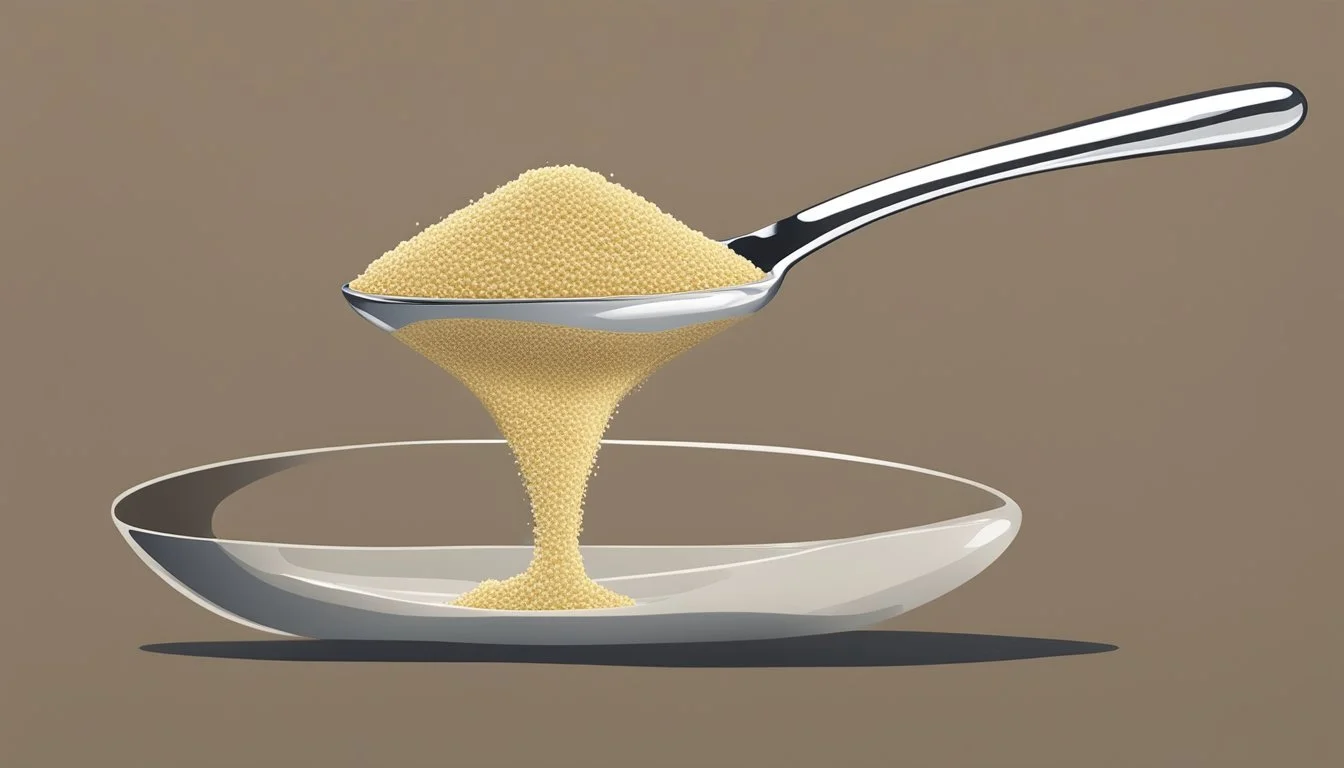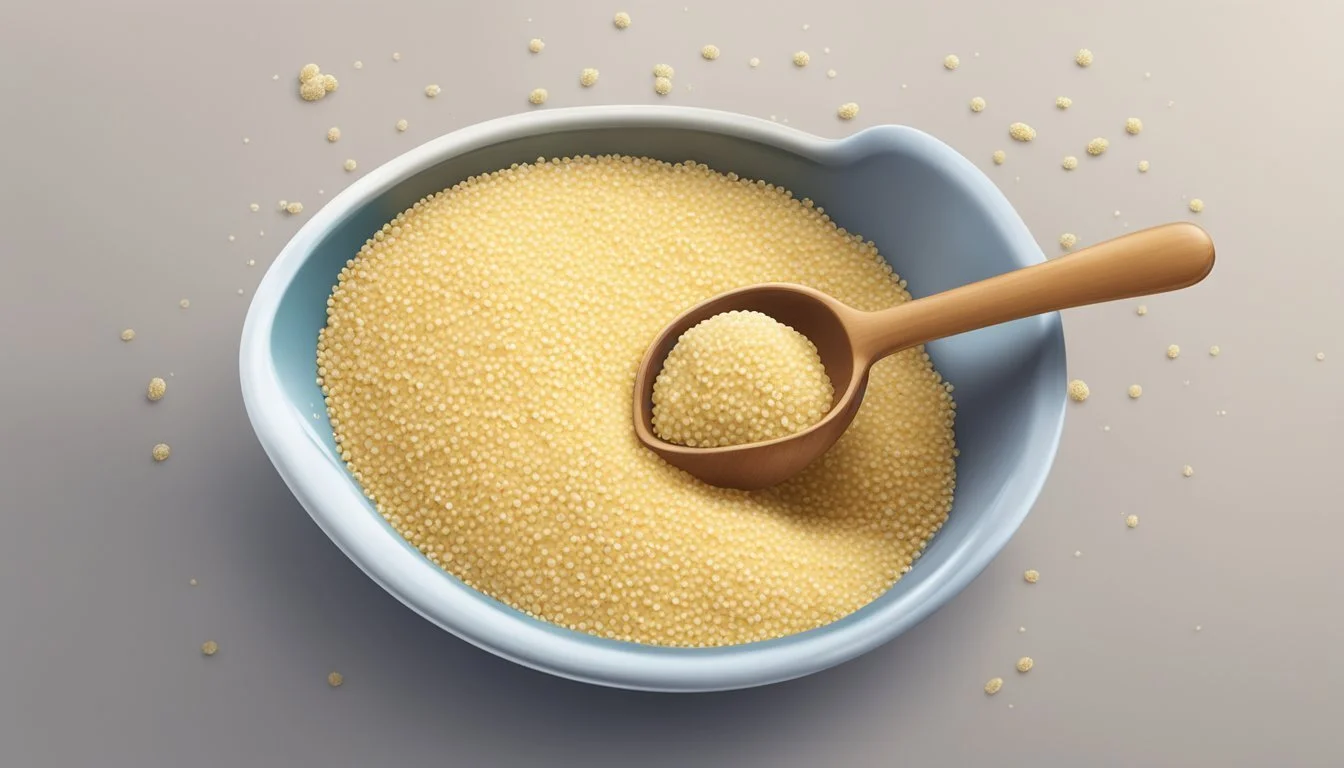How Many Tablespoons in a Packet of Yeast
Measurement Guide
Understanding the quantity of yeast in a packet is critical for bakers who want to ensure that their breads, pastries, and other yeast-leavened goods turn out perfectly. A packet of yeast generally contains around 2 and 1/4 teaspoons, which is equivalent to approximately 7 grams, or 1/4 ounce. While this may seem like a small amount, it is typically the perfect quantity for making a standard loaf of bread or a similar recipe.
However, measuring in tablespoons can often cause confusion since this is not the standard measurement for yeast. It is important to note that most brands have a consistent amount in their packets, but it is advisable to double-check if a recipe specifies tablespoons or if using bulk yeast. The standard conversion from the typical packet measurement to tablespoons is between 2 and 2½ tablespoons, which aids in converting recipes or substituting different forms of yeast when necessary.
Understanding Yeast and Its Types
Yeast, as a critical ingredient for bakers, comes in several forms, each with unique properties that affect the baking process. Understanding the specifics of yeast types is essential for achieving the best results in recipes.
Active Dry Yeast
Active dry yeast consists of granules of live, inactive Saccharomyces cerevisiae cells. These granules require rehydration or "proofing" in warm water prior to use. It's a staple for many bakers because of its stability and longer shelf life. Yeast packets containing active dry yeast typically hold about 2 and 1/4 teaspoons, vital information when preparing bread, pizza dough, or other baked goods.
Instant Yeast
Contrary to active dry, instant yeast also known as "quick-rise" or "rapid-rise" yeast, comprises finer granules that can be mixed directly with dry ingredients, thus eliminating the need for rehydration. This convenience makes instant yeast a popular choice for bread machine recipes or when time-saving is a priority. One packet of instant yeast holds a similar amount to that of active dry yeast, around 2 and 1/4 teaspoons.
Fresh Yeast
Fresh yeast, often preferred by professional bakers for its quality and rich flavor profile, is a moist, cake-like yeast also known as "compressed yeast." While it offers exceptional leavening capabilities, it has a much shorter shelf life than its dry counterparts and requires refrigeration. Typically, one block of fresh yeast is equivalent to one packet of dry yeast.
Specialized Yeast Varieties
There are specialized yeast varieties tailored for specific baking needs, such as wild yeasts harnessed for sourdough breads and artisanal products. Additionally, some yeast packets are designed for particular dough types, like those optimized for pizza dough which may contain dough conditioners and other enhancing agents. When using these varieties, bakers must follow specific guidelines to accommodate the altered behavior of the yeast during the fermentation process.
Measurement and Conversion
Understanding how yeast is measured and converted is crucial in baking, as it ensures that the leavening agent is accurately proportioned for the intended recipe.
Yeast Packet Contents
A typical packet of yeast holds approximately 7 grams or 0.25 ounces. This translates to about 2 1/4 teaspoons of yeast, which is a standard measure used in many recipes.
Conversion to Tablespoons
When measuring yeast, it's common to use teaspoons, but converting to tablespoons is straightforward. Since there are 3 teaspoons in 1 tablespoon, 2 1/4 teaspoons is equivalent to 3/4 of a tablespoon.
Teaspoons Tablespoons 2 1/4 tsp 3/4 tbsp
Yeast-to-Flour Ratio
In recipes, the ratio of yeast to flour is essential for the desired outcome of bread or other baked goods. The standard ratio is typically 1 teaspoon of yeast to 1 cup of flour. In larger recipes, it's important to maintain this ratio to ensure proper leavening and texture of the final product.
Baking Fundamentals
Understanding the role and management of yeast is crucial to perfecting baked goods. This section provides essential information for working with yeast during the baking process and maintaining optimal conditions for yeast activity.
Baking with Yeast
Yeast is a vital ingredient in baking that causes dough to rise by producing carbon dioxide gas during the fermentation process. The production of carbon dioxide creates air pockets, which contribute to a loaf’s light and airy texture. For bread baking, accurate measurement of yeast is key, and a standard packet typically contains about 2 and 1/4 teaspoons of yeast.
Optimal Conditions for Yeast
To achieve the best results, yeast requires specific conditions to activate and carry out fermentation efficiently. Temperature and moisture greatly influence yeast activity. Ideally, yeast thrives at temperatures between 70°F and 100°F. Excessively high temperatures can kill yeast, while too low temperatures may retard the growth and activity of the yeast. Using warm water, typically around 110°F, is a common practice to ensure yeast is activated properly.
Optimal Yeast Conditions:
Temperature: 70°F to 100°F (21°C to 38°C)
Water Temperature: Around 110°F (43°C)
Troubleshooting Common Issues
Challenges in baking with yeast can often be linked to improper fermentation. If the dough does not rise as expected, it may be due to expired yeast, incorrect temperatures, or insufficient rising time. Conversely, if a loaf has irregular holes or a weakened structure, it may be an indication of over-proofing. Constant monitoring and adjusting conditions as needed can mitigate these issues.
Common Yeast Troubleshooting:
No Rise: Check yeast validity, temperature, and rising time.
Irregular Holes: Avoid over-proofing and ensure uniform gluten development.
Alternative Leavening Agents
While yeast is commonly used for bread baking, there are alternative leavening agents available for bakers. Baking powder and baking soda are chemical leavening agents that release carbon dioxide in the presence of moisture and an acid, causing the dough or batter to rise. These ingredients are often used in recipes that require a quick rise, such as cakes and quick breads, where fermentation's flavors and textures are not desired.
Alternative Agents:
Baking Powder: Requires moisture and acid to react.
Baking Soda: Reacts with acid and moisture; used for quicker rise.
Storage and Shelf Life
When it comes to yeast, understanding proper storage and assessment of potency are crucial for baking success. Store yeast properly to maintain potency and extend shelf life.
Proper Storage of Yeast
Yeast should be stored in a cool, dry place to preserve its effectiveness. A jar of yeast or packets of yeast can generally be kept at room temperature until the expiration date. For extended storage and to maintain potent yeast:
Refrigerator: Yeast can be stored in the refrigerator, ideally between 33-38°F (0.5-3.3°C), to prolong its viability.
Freezer: For long-term storage, yeast can be kept in the freezer where it remains dormant but viable for months or even years.
Yeast should be kept away from light, particularly UV rays, as it can degrade its quality. Use an opaque container or store in a dark place.
Determining Yeast Potency
To test if yeast is still potent, one can conduct a viability test:
Dissolve the yeast from a packet in 1/2 cup of water heated to 110°F (43°C).
Add 1/2 teaspoon of sugar and stir.
Wait 10 minutes; a potent yeast will create a foam that rises to the 1-cup mark.
If this foaming action, known as proofing, does not occur, the yeast has lost its potency and should be replaced.
Extending Yeast's Usability
Extending the shelf life of yeast depends on storage conditions. To maximize the usability:
Seal the yeast tightly for storage to prevent exposure to air and moisture.
Date the packet of yeast or jar upon opening, to better track its aging process.
Return yeast to the proper storage condition promptly after each use; do not leave it at room temperature longer than necessary.
Yeast in Cooking and Brewing
Yeast plays a crucial role in both cooking and brewing, acting as a fermenting agent that causes dough to rise and beverages to gain alcohol content.
Yeast in Baking Recipes
In baking, yeast is essential for producing a variety of baked goods, from breads to pastries. It works by consuming sugars and converting them into carbon dioxide and alcohol, which leads to the leavening of dough. The specific amount of yeast used can affect the texture and flavor of the final product.
Cakes and Sweet Breads: For sweet doughs, such as those used for cakes, cinnamon rolls, or brioche, a slightly higher amount of yeast can be used to counteract the inhibiting effects of heavy sugars and fats.
Cinnamon, Cinnamon Rolls, and Brioche: These rich, flavorful recipes often require a delicate balance of yeast to ensure that the bread rises adequately without becoming too dense. Brewers also rely on yeast, particularly Saccharomyces cerevisiae and its variants, to ferment sugars and produce alcohol in beer and wine. The fermentation process varies significantly between beer and wine due to the differences in sugars from grains versus fruits.
Beverages: In beer brewing, yeast not only ferments the malt and creates alcohol but also contributes to the beer's final flavor profile. Wine fermentation, on the other hand, involves a slower yeast-action allowing for the gradual conversion of fruit sugars into alcohol, creating a range of taste notes from dry to sweet.
Yeast Selection and Usage Tips
When it comes to baking with yeast, understanding the types available and how to properly prepare them is essential for successful results.
Choosing the Right Yeast
Granular Yeast: This is a common form found in yeast packets which are typically available in varying quantities. Bakers should note that one standard packet usually contains about 2 ¼ teaspoons of granular yeast.
Substituting Yeast: When substituting different types of yeast in recipes, it is crucial to be aware of their differing properties. For example, one packet of active dry yeast is generally interchangeable with one packet of instant yeast, including brands labeled as Quick-Rise or RapidRise yeast.
Yeast Manufacturers: Different yeast manufacturers might pack slightly different amounts of yeast in their packets; however, they usually fall within the range of 2 to 2½ tablespoons.
Selecting Yeast for Recipes: Except in cases where a specific yeast is recommended, bakers can typically choose between active dry, instant, quick-rise, and rapidrise yeast, based on personal preference or recipe requirements.
Rehydrating and Activating Yeast
Rehydrate Process: Before active dry yeast is used, it should be rehydrated in warm water, typically between 70°F and 100°F. The water should be warm to the touch, not hot, to avoid killing the yeast. Once properly rehydrated, the yeast mixture will become foamy, indicating it is active and ready to be incorporated into the recipe.
Activation for Granular Yeast: Instant, Quick-Rise, and RapidRise yeast variants do not require rehydration and can be added directly to the other recipe ingredients. These yeast types are coated with a layer of dehydrating agents that dissolve quickly, allowing the yeast to activate once it comes into contact with the dough's moisture.
Yeast Beyond Baking
Yeast, an ingredient commonly associated with bread and pastries, also plays a significant role in the world of nutritional supplements.
Yeast in Nutritional Supplements
In the realm of nutritional supplements, nutritional yeast is a powerhouse ingredient due to its rich source of B-vitamins, minerals, and essential amino acids. Unlike the active dry yeast used in baking, which ferments dough, nutritional yeast is deactivated, meaning it has no leavening power and won’t cause baked goods to rise.
Nutritional yeast is also known for its unique flavor, often described as nutty, cheesy, or savory, which makes it a favorite among those following vegan diets. It is a versatile food additive that can be sprinkled on various foods or incorporated into recipes.
Nutritional yeast is a rich source of:
B-vitamins, which are crucial for energy production and brain health
Minerals such as zinc, selenium, manganese, and molybdenum
Protein, providing all nine essential amino acids making it a complete protein source
Fiber that aids in digestion and promotes gut health
Nutritional yeast often comes fortified with additional vitamins, such as B12, which is especially important for those who follow a plant-based diet.
The production of nutritional yeast involves the cultivation of Saccharomyces cerevisiae on a mixture of molasses and other nutrients. The yeast is then harvested, washed, deactivated with heat, dried, and crumbled. This process does not utilize starches or enzymes that are active in the digestion process.
Because nutritional yeast is high in nutritional value and low in fat and salt, it is widely regarded as a useful supplement for those looking to boost their intake of essential nutrients. It's an especially popular supplement among vegans and vegetarians who may rely on it as a source of vitamins and minerals that might be harder to obtain from a plant-based diet alone.





